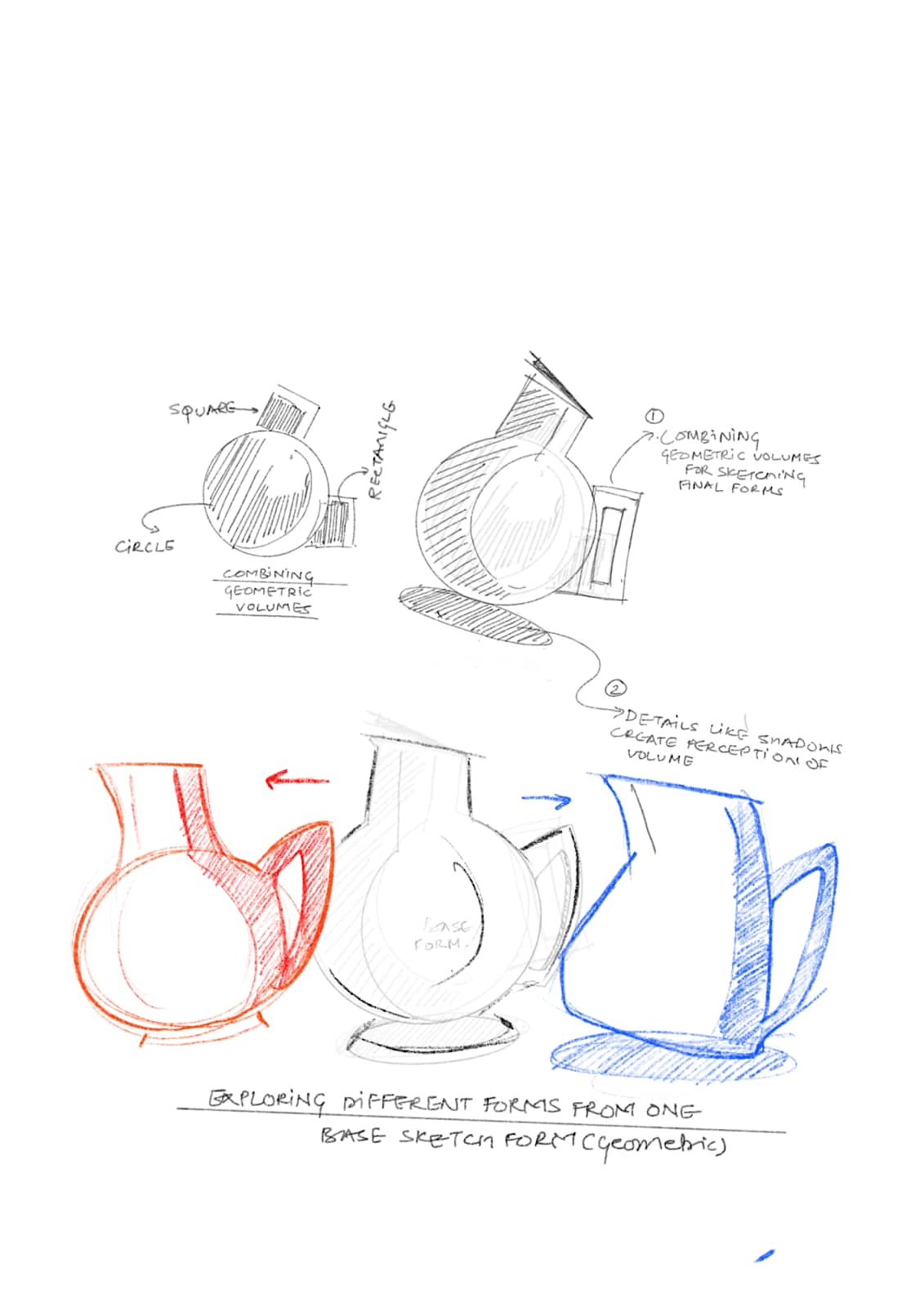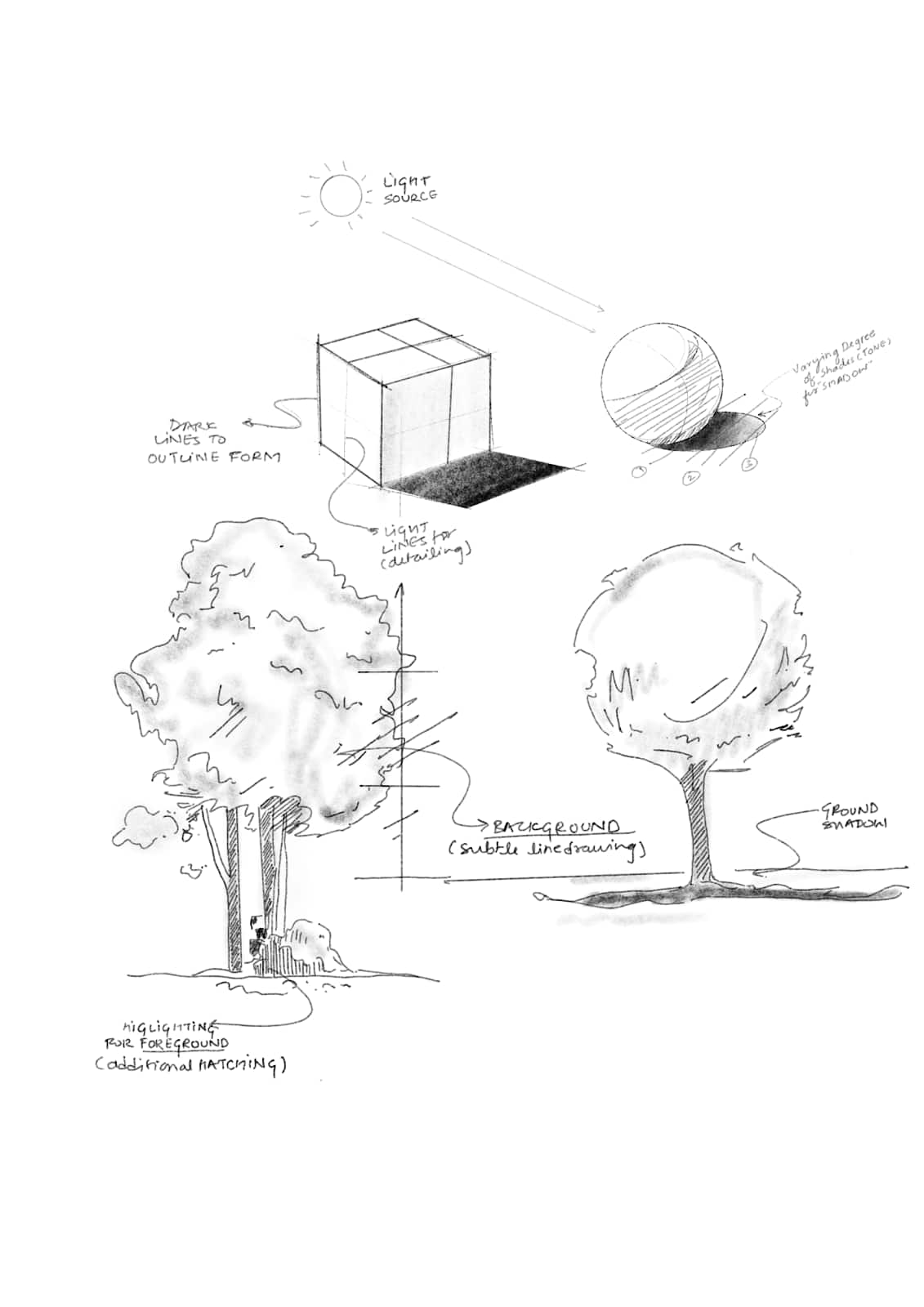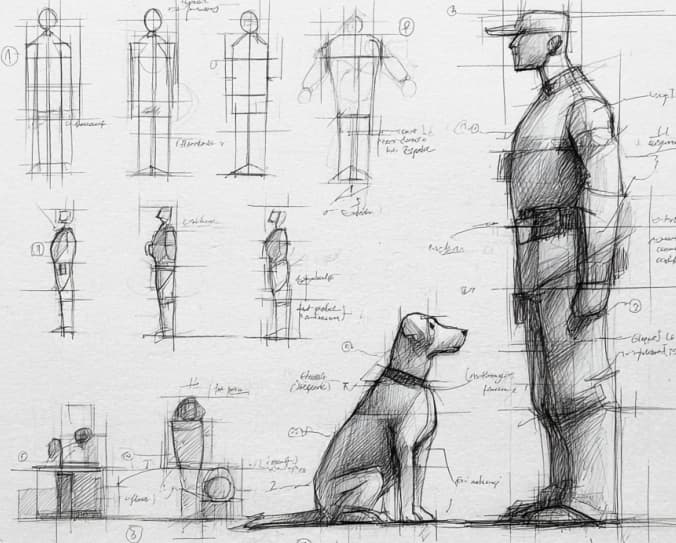Amity University | M. Design Admissions 2026
Tie-ups with over 100 international Universities in USA, UK, France and Australia. Wide Range of scholarships available.
The Sketching and Design questions in Part-B (Drawing Aptitude Test) are the most often scored portion for the majority of applicants to Design School. This section consists of direct or indirect questions designed to evaluate a candidate's ability to observe, detail, and ask questions for tests such as the NID, NIFT and UCEED.

In this article we will be covering the approach and step-by-step guide to develop the sketching skills for most appropriate practice with do’s and dont’s to prepare.
Why is Sketching Crucial ?
Communicate your ideas quickly
Presenting the Functional Aspect on paper
Visual problem solving
Below we are sharing a step by step incremental approach to develop the Sketching Skills:
The ability to draw is the connection between the brain and hands that can only foster by enriching the Visual memory and details in the same. The observation skill can be developed by:
Developing an observation on how the light falls, shadows are created and various volumes like the cup, shoe, bags and furniture begin and end.
A five minute daily exercise of sketching with real-life objects can boost your visual memory, that could be the foundation stone to transfer the observation to reflection.
Tie-ups with over 100 international Universities in USA, UK, France and Australia. Wide Range of scholarships available.
Courses offered in- Fashion Design, Product Design, Communication Design, Interior & Spatial Design & Animation & VFX Design
All complex shapes and volumes are made of the fundamental simpler geometric shapes and volumes, like cube, sphere, cylinder, and cone etc. Below we provide some tips in the for same:
Learn to draw the forms from different perspectives and break them into smaller chunks of geometric volumes.
Practise mental visualisation of the forms, for understanding of the depth, light and pattern.

Illustration For breaking the objects to geometric volume and exploring variations
Students may also check following articles to prepare for the section:
Lines play a pivotal role in sketching, where the line quality and line weight is crucial for confident reflection through sketching.
Practise with straight lines, curved lines, ellipses and the circles with freehand. Warm up with 5-10 minutes for line exercises on a newspaper of full length before sketching everyday.
Avoid over-sketching, even if you make a mistake to avoid any overlapping or duplicacy.
To begin with understanding the “Core Design principles” from the very beginning helps you avoid the mistakes that are preventable in the initial stages only
Begin with the understanding of the following principles like Balance, Proportion, Movement, Pattern, Unity, Contrast, and Emphasis etc.
Familiarise yourself with the 12 Principles of Animation (e.g., Squash and Stretch, Anticipation, Staging, Timing, Exaggeration, Appeal). These principles are vital for depicting motion and emotions in your designs, making them more lively and realistic.
Students may also check the following articles to prepare for the section:
The Foundation technical skills include the understanding of the following aspects:
Proportion and Scale: Practice balancing the scale and proportion, for human & animal, transforming 2D images to 3D perspective views, ensuring the correct size and proportions of the object and the surrounding

Solid Drawings: Focus on making the objects(forms) appearing measurable and real, as if in a three dimensional plane with volume and mass, into the box as the constraint.

Human and animal figures are critical to practise with focus on stick figures, action lines, gesture lines (for Posture and emotions).
Sketching questions related to human and animal figures are seen to be asked more in the UCEED exam. Therefore, aspiring students can go through Tips to Sketching Human Figures and Interaction for UCEED 2026 for better understanding and preparation.
Cultivate the ability to interpret and manipulate 2D shapes into 3D forms, such as folding/unfolding cubes, detecting patterns, and solving orientation-based questions.
Practice mentally visualising and transforming 3D structures, which is beneficial for understanding environments in sculpting and product design.
Focus on question types involving order and patterns on cubes, 3D object orientation and rotations, combination of shapes and volumes, and folding/unfolding cubes/cuboids.
Students may also check following articles to prepare for the section:
Section-B / Drawing Aptitude section is usually very scoring but at the same time very time consuming as well, where the time management becomes critical.
Use the ACDF (Analyse-Create-Detail-Finish) approach for time based approach to answer design based questions.
[A]- Analyse the Question (2-3 minutes): Identify requirements, key elements, and plan the composition through thumbnail sketches. Integrate keywords to understand the context.
[C]- Create a Rough Outline (5-7 minutes): Use faint lines to map out tentative details and establish correct proportions.
[D]- Add Details and Textures (12-15 minutes): Emphasise the primary subject with bold lines, incorporate realism details, and ensure even distribution of details.
[F]- Final Touches (2-3 minutes): Apply shading/colouring for depth, refine line quality, and make final adjustments.
This framework helps prioritise ideas, balance clarity and neatness, and allocate time for refinements.
Here are some of the important Do’s and Dont’s that aspiring students can follow to prepare for their sketching skills for design aptitude exams:
Plan Thoroughly: Always plan your outcome before execution through thumbnail sketches, focusing on user interactions and functional illustration.
Prioritise the Idea: Remember that the idea takes 80% of the attention in a design test. Focus on conveying a meaningful and clear reflection of your concept through quality sketching.
Be Precise and Crisp: Aim for clarity and neatness in your sketches. Your descriptions should be concise, ideally no more than 10 words for an action/figure.
Show Human Interaction: Whenever relevant, depict human interaction to highlight activities and explain the use case scenario of your proposed solution.
Focus on Proportions and Alignment: Ensure your construction approach matches the proportions and alignment required for transforming 2D into 3D objects, or for realistic human figures.
Highlight Crucial Elements: Use variation in strokes, such as darker lines for main outlines and crucial elements, and lighter lines for secondary details, to add realism and guide the viewer's eye.
Ranked #45 Among Universities in India by NIRF | 1950+ Students Placed, 91% Placement, 800+ Recruiters
Recruiters: Aditya Birla, Wildcraft, Tommy Hilfiger, Vero Moda etc | Only Fashion Institute in India to have entered the LIMCA BOOK OF RECORDS
Don't Overthink: Avoid spending too much time thinking. Rather Focus on translating your ideas into clear, meaningful sketches.
Don't Overdo It: In an exam setting, avoid trying to create a masterpiece. The objective is to convey your idea appropriately within the time constraints, not to achieve perfection.
Don't Misinterpret Questions: Due to time pressure, avoid focusing on minor details and missing the core requirement of the question. Understand the primary context first.
Don't Colour Unless Asked: Unless specifically instructed, avoid colouring the object. Such questions typically evaluate your understanding of visualisation through perspective, and colour can be time-consuming. If using colour, keep it minimalist to manage time.
Related articles that students can go through in their preparation for the prestigious design exams:
On Question asked by student community
Hello,
Getting admission in IITs or NID for BDes depends on a few things: your entrance exam score, portfolio, and sometimes your interview performance.
IITs (for BDes) : Admission is mainly through UCEED . You need a good rank in UCEED to get in.
NID : Admission is through NID DAT (Design Aptitude Test) . Your portfolio and DAT score matter a lot.
If your preparation and scores are strong, you have a chance. You can check previous years’ cut-offs to see where you stand.
Hope it helps !
Here are top BDes (Fashion Design) colleges in Bangalore:
National Institute of Fashion Technology , Bangalore – Top choice
JD Institute of Fashion Technology
Vogue Institute of Art and Design
IIFA Multimedia
Army Institute of Fashion and Design
Taking a second drop is not an issue if you clear the required entrance exams or meet the eligibility criteria.
FLAME University Pune is a good option for B.Des if you’re looking for a creative and interdisciplinary learning environment . The university offers a well-structured design program combined with liberal arts, allowing students to explore multiple interests It has a beautiful and modern campus with strong academic support and personalized attention due to smaller batch sizes. However, it is more know liberal arts and business programs, so if you want a purely design-focused education, you might also consider institutes like MIT-WPU or Shiv Nadar University. Overall, FLAME is suitable for students who want a broad, flexible design education and can afford the higher fees.
CUET qualifies BDes Fashion Designing students.
The basis for admission is the CUET score.
yes, Indeed, CUET qualifies BDes Fashion Designing students.
Admission CUET score is very important.
Ranked as India’s #1 Not for profit pvt. University by India Today | Wide Range of scholarships available
Among top 100 Universities Globally in the Times Higher Education (THE) Interdisciplinary Science Rankings 2026
World-class design education with a global curricular collaboration with Parson’s School of Design
Ranked #45 amongst Universities in India by NIRF | Ranked #1 in Academic Reputation in India by QS World University Rankings
Ranked 2nd in the IIRF 2023 Design School Ranking | Approved by AICTE | Highest CTC 13 LPA
No. 1 Design & Fashion Institute by ASSOCHAM, India Today, Outlook and The Week rankings